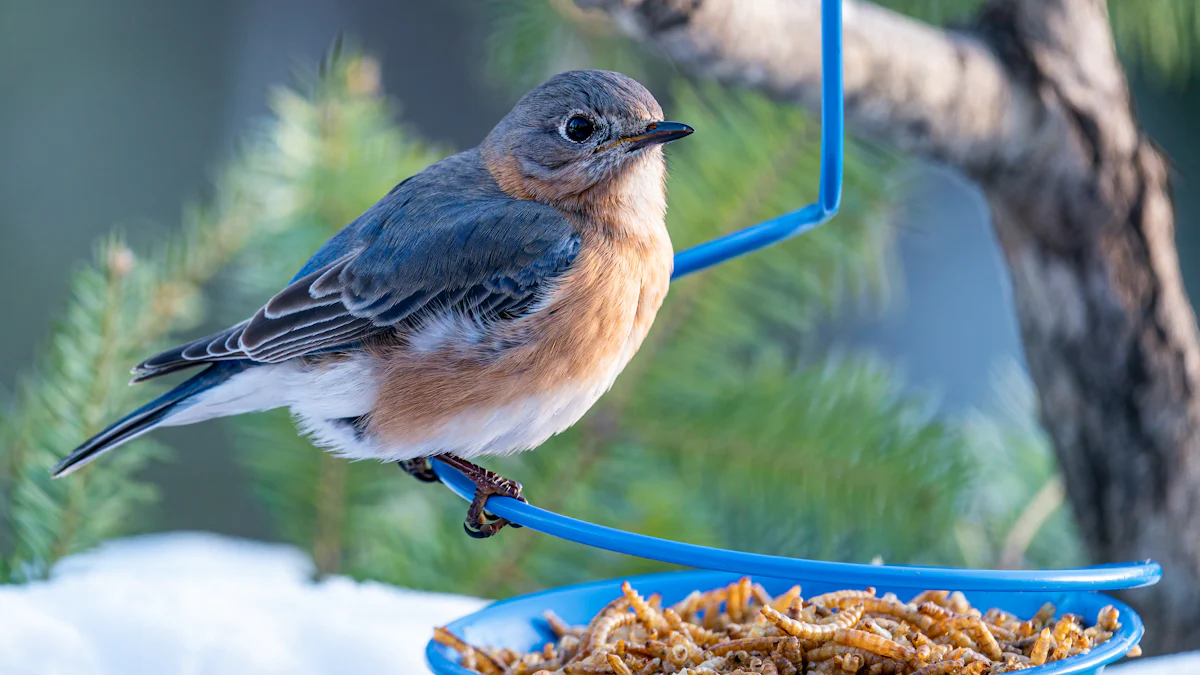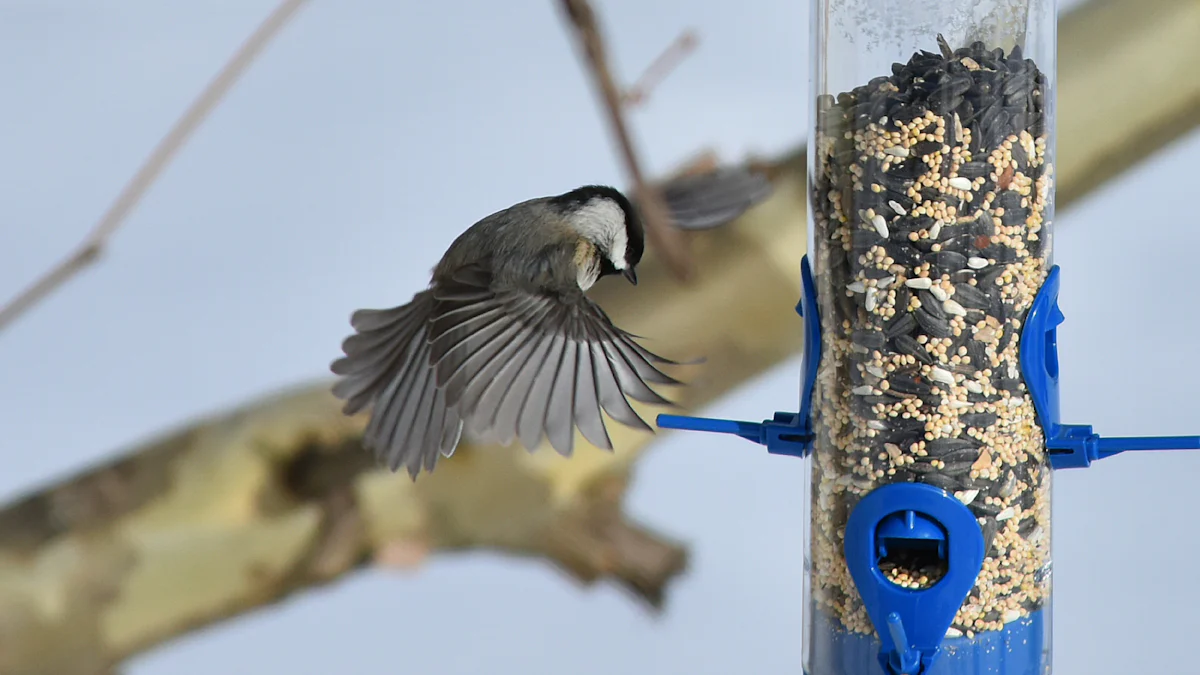
Dried mealworm treats for pets are a nutritious and versatile snack. Packed with protein, they support muscle growth and energy. These treats also provide essential vitamins like B12 and minerals such as calcium and iron. Suitable for chickens, reptiles, and small mammals, they’re a healthy choice that pets love. 🐾
Key Takeaways
- Dried mealworm snacks are healthy and full of protein, vitamins, and minerals. They are great for pets like chickens, reptiles, and small mammals.
- Prepare them properly: freeze live mealworms first to be kind and keep them fresh. Use an oven or dehydrator to dry them evenly.
- Keep dried mealworms in sealed containers to stay fresh and avoid spoiling. Check often for mold or bad smells to protect your pets.
Supplies for Dried Mealworm Treats for Pets
Before making dried mealworm treats for pets, gather the right supplies. Having everything ready ensures a smooth process and better results. Here’s what you’ll need:
Live or pre-dried mealworms
Start with either live or pre-dried mealworms. Live mealworms are fresher and allow you to control the drying process. Pre-dried mealworms, like Exotic Nutrition’s Dried Mealworms Treat, save time and are already packed with protein, vitamins, and minerals. Chubby mealworms are another great option. They’re larger, firmer, and provide essential fatty acids for your pet’s health.
| Nutrient | Live Mealworms | Dried Mealworms |
|---|---|---|
| Moisture Content | 62% | 5% |
| Protein Value | 20% | 53% |
| Fat Value | 13% | 28% |
| Fiber Value | 2% | 6% |
Freezer or refrigerator
Freezing live mealworms before drying is essential. It humanely prepares them for the process and prevents spoilage. A standard freezer or refrigerator works perfectly for this step.
Baking sheet or dehydrator
A baking sheet is ideal for oven-drying mealworms. Line it with cornmeal to prevent sticking. If you prefer a dehydrator, it offers a more consistent drying process and is easier to use for large batches.
Oven or dehydrator
An oven is a common choice for drying mealworms at home. Set it to a low temperature to avoid burning. A dehydrator, however, provides better control over the drying process and ensures even results.
Airtight storage containers
Once the mealworms are dried, store them in airtight containers. This keeps them fresh and prevents moisture from ruining the treats. Glass jars or plastic containers with tight lids work well. Add a silica gel packet for extra protection against humidity.
Tip: Consider adding safe supplements like wheat germ or brewer’s yeast to enhance the nutritional value of your dried mealworm treats for pets. Avoid harmful seasonings or additives.
Step-by-Step Guide to Making Dried Mealworm Treats

Freezing mealworms for preparation
Freezing mealworms is the first step in making dried mealworm treats for pets. It’s a humane way to prepare live mealworms for drying. Start by placing about 5,000 mealworms into a plastic container. Cover the container securely to prevent freezer burn. Put it in the freezer for about 15 minutes. If the mealworms are still moving, leave them in for a little longer and check again. Once frozen, they can be stored for up to two months. Label the container with the date if you’re freezing multiple batches.
Tip: Freezing not only humanely kills the mealworms but also helps preserve their freshness until you’re ready to dry them.
Drying mealworms in an oven
Using an oven is a simple way to dry mealworms at home. Preheat the oven to a low temperature, around 200°F (93°C). Spread the mealworms evenly on a baking sheet lined with cornmeal to prevent sticking. Place the sheet in the oven and let the mealworms dry for about 1-2 hours. Stir them occasionally to ensure even drying. Keep an eye on them to avoid burning. Once they’re golden brown and crispy, they’re ready to cool.
Using a dehydrator for mealworms
A dehydrator offers a more consistent drying process, especially for larger batches. Arrange the mealworms in a single layer on the dehydrator trays. Set the temperature to 120°F (49°C) and let them dry for 6-8 hours. Check on them periodically to ensure they’re drying evenly. Dehydrators are great for maintaining the nutritional value of dried mealworm treats for pets while achieving a perfect texture.
Cooling and inspecting the dried mealworms
After drying, let the mealworms cool completely before storing them. Cooling prevents condensation, which can lead to spoilage. Once cooled, inspect the mealworms for quality. Look for any signs of mold, discoloration, or an off smell. Dried mealworms should have a consistent golden-brown color and a pleasant, nutty aroma. Discard any that show black spots, dullness, or other abnormalities.
Note: Properly dried mealworms are not only safe but also more appealing to pets. Always double-check for quality before feeding them to your animals.
Tips for Perfect Dried Mealworm Treats
Enhancing nutritional value with safe additives
Adding safe, pet-friendly supplements can boost the nutritional value of dried mealworm treats. For example, sprinkling a small amount of wheat germ or brewer’s yeast over the mealworms before drying can provide extra vitamins and minerals. These additives support your pet’s overall health and make the treats even more beneficial. Always research the specific needs of your pet species to ensure the additives are appropriate. Avoid anything that could upset their stomach or cause harm.
Avoiding harmful seasonings and common mistakes
When preparing dried mealworm treats for pets, avoid using seasonings like salt, garlic, or onion powder. These can be toxic to animals. Stick to natural mealworms without any added flavors. Another common mistake is not sourcing mealworms from reputable suppliers. Contaminated mealworms can pose health risks to pets, so always choose high-quality products intended for animal consumption. If you notice mold or an unusual smell, discard the batch immediately to keep your pets safe.
Ensuring mealworms are fully dried for safety
Properly drying mealworms is essential to prevent mold growth and bacterial contamination. Moisture is the biggest enemy of dried mealworms. After drying, inspect them carefully to ensure they’re crispy and golden brown. Store them in an airtight container to keep them fresh and extend their shelf life. A dry environment is key to maintaining the quality of the treats. If the container feels humid, add a silica gel packet to absorb excess moisture.
Note: Spoiled mealworms can harm your pets. Always check for signs of spoilage before feeding.
Storing and Using Dried Mealworm Treats
Proper storage to maintain freshness
Storing dried mealworm treats properly ensures they stay fresh and safe for pets. Airtight containers are a must. They prevent moisture from seeping in, which can lead to spoilage or mold. Resealable bags or rigid plastic containers with tight lids work best. For added protection, store the containers in a dark cupboard or pantry, away from sunlight. The ideal temperature for storage is between 60°F and 75°F (15°C to 24°C). Regularly check for any signs of spoilage, like an off smell or discoloration.
For long-term storage, dried mealworms can last 6-12 months if kept in proper conditions. If you want to store them for even longer, consider adding a silica gel packet to absorb excess moisture. This simple step helps maintain the quality of the treats and keeps them fresh for your pets.
Feeding dried mealworms to different pets
Dried mealworm treats for pets are versatile and suitable for many animals. Birds benefit greatly from these treats as they provide a protein boost, improve feather quality, and support egg production. For reptiles, turtles, and small mammals, mealworms offer essential nutrients like calcium and vitamin B12.
When feeding, portion sizes should match the pet’s size and dietary needs. A few mealworms per feeding are usually enough. For pets needing more protein, like birds or reptiles, mealworms can be offered 1-2 times a week. Avoid overfeeding to prevent dietary imbalances. Mixing mealworms with other foods, like fruits or vegetables, creates a balanced diet.
Monitoring your pet’s reaction to the treats
Introducing dried mealworm treats to a pet’s diet should be done gradually. Start with a small amount and observe how they react. Watch for signs of digestive upset or allergies, such as vomiting or changes in behavior. If the pet shows no adverse reactions, you can continue feeding them as a treat or supplement.
For pets new to mealworms, soaking them in warm water for 10-15 minutes can make them easier to eat. This step is especially helpful for smaller animals or those with sensitive digestion. Always monitor your pet’s health and adjust the feeding frequency or portion size as needed.
Tip: Keep an eye on your pet’s overall health and energy levels. Dried mealworm treats should enhance their diet, not replace their regular meals.
Making dried mealworm treats for pets offers many benefits. These treats mimic a natural diet, are easy to digest, and promote healthy skin and coats. They’re versatile, convenient to store, and packed with nutrients. Homemade treats ensure freshness and safety, making them a rewarding choice for pet owners and their animals. 🐾
FAQ
How long do dried mealworm treats last?
When stored in airtight containers in a cool, dry place, dried mealworm treats can last 6-12 months. Add silica gel packets for extra freshness.
Can I feed dried mealworms to baby pets?
Baby pets can eat dried mealworms, but soak them in warm water first. This softens the texture, making them easier to chew and digest.
Are dried mealworms safe for all pets?
Dried mealworms are safe for most birds, reptiles, and small mammals. Always check your pet’s dietary needs and consult a vet if unsure.
Tip: Introduce mealworms gradually to monitor your pet’s reaction and ensure they enjoy their new treat!


